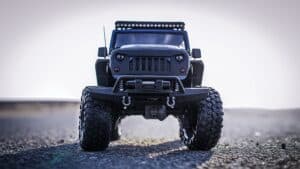
Purchasing 12-16.5 skid steer tire size-types or any other tires is not a decision to be taken lightly. Skid steer tires are often the most expensive consumable component of the machine, so you will want to make sure of getting the best deal possible for your skid steer loader operations.
It’s easy to focus solely on upfront expenditures when purchasing skid steer tires. However, focusing just on the early fees can be an expensive mistake in the long run. Tires may need to be replaced regularly, depending on their type and condition. They could potentially be costly to operate and maintain.
This is why, before you buy, you should undertake a thorough cost analysis of the costs of owning and operating your skid steer tires. This ensures that you get the best possible return on your investment (ROI).
Installation
Take into account the cost and time involved in tire installation. Some tire installations are complicated and may necessitate the assistance of a professional. If you are not enabled to install it yourself, the fees will be more significant. And it is possible that this is not a one-time expense. When a tire needs to be replaced, you must also factor in the cost of fitting a new tire.
Repair Costs
Pneumatic (air-filled) skid steer tires are less expensive than solid tires, so they may appear to be a good deal at first. Pneumatic tires, on the other hand, tend to wear down faster than solid tires over time.
They are also inclined to punctures and flats than solid tires, requiring more frequent maintenance or replacement. Over time, this equates to increased maintenance and operational costs.
Wear
Furthermore, pneumatic and foam-filled tires wear out more quickly than solid skid steer tires. Solid tires feature more layers of rubber and are built of durable, resilient rubber compositions.
They are particularly resistant to being punctured and chunked. When picking between solid tires and various types of skid steer tires, keep this in mind.
The quality of skid steer tires varies. Be mindful of the elements that affect tire wear and longevity when selecting a set of tires for your skid steer. A tire with a high proportion of natural rubber and carbon black is often more durable than one with a higher proportion of synthetic rubber and less carbon black.
So, if you’re thinking about buying low-cost tires, keep in mind that they won’t last as long as high-quality tires.
Costs Regards to the Machine Downtime
Machine downtime can be costly. Flat tires that need a replacement or repair are a common source of skid steer downtime. Unlike foam-filled and solid tires, pneumatic tires are prone to flats. This means that pneumatic skid steer tires cause machine downtime far more frequently than foam-filled or solid tires.
This amounts to a higher operational cost per hour, especially when salaries on the working site are factored in. When you choose low-quality skid steer tires instead of high-quality skid steer tires, you’ll have more machine downtime.
The skid steer tires come in different sizes, for example, 10-16.5 Skid Steer Tires, 12-16.5 Skid Steer Tires, and 14 – 17.5 Skid Steer Tires. But all of them are manufactured with high quality and precise perfection in regards to customer satisfaction.